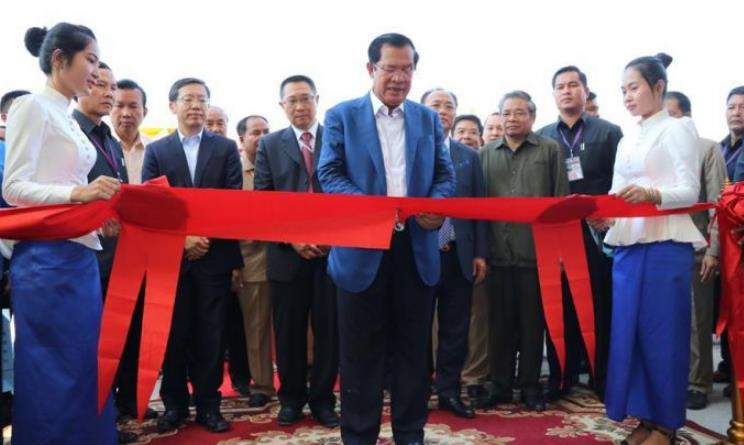
The Chinese-built Lower Sesan II hydroelectric power station was inaugurated here in far northeastern Cambodia on Monday after almost five years of construction.
The 400-megawatt dam is the largest and the seventh one built by China in the Southeast Asian country.
Cambodian Prime Minister Samdech Techo Hun Sen and Chinese Ambassador to Cambodia Wang Wentian presided over the inauguration ceremony held near the dam with more than 4,500 participants.
Hun Sen said the 781-million-U.S. dollar project is a joint venture among China's Huaneng Hydrolancang International Energy holding 51 percent of the stake, Cambodia's Royal Group owning 39 percent and Vietnamese EVN International Joint Stock Company possessing 10 percent.
"This is the biggest and the seventh Chinese-built hydropower dam in Cambodia," the prime minister said. "It will contribute to ensuring the energy security, lowering the price of electricity, and reducing poverty in Cambodia."
He said the project not only supplied electricity to Stung Treng province, but also to other provinces and capital Phnom Penh.
"With this dam project, the electricity supply in Cambodia has increased to 2,648 MWs now, up from 150 MWs 20 years ago," he said.
The Chinese-built seven dams are capable of producing a total of 1,328 MWs, or 50.1 percent of the electricity production available in the kingdom.
The prime minister also expressed his profound gratitude to the government of China for encouraging Chinese enterprises to invest in Cambodia.
Meanwhile, he praised the dam developer for its proper resettlement and compensation for affected residents, saying that an affected family had received a (20-meter-by-50-meter) parcel of residential land and a 5-hectare plot of farmland.
Fan Qixiang, vice president of China Huaneng Group, the parent company of Huaneng Hydrolancang International Energy, said the achievement today was born of excellent cooperation between Cambodia and China under the framework of the Belt and Road Initiative.
"The dam will help relieve electricity shortage, lower the price of electricity, and contribute to socio-economic development in Cambodia," he said. "The project becomes a fine example of cooperation in energy sector between Cambodia and China."
Fan said the company would give top priority to the dam's safety so as to produce clean and stable electric power for Cambodia, and he was confident that the project would contribute further to deepen the fraternal relations between the peoples of the two countries.
The Lower Sesan II dam, 56.5 meters tall, covers a 36,000-hectare plot.
Cambodian Minister of Mines and Energy Suy Sem said the project is a concessional contract of a 45-year build-operate-transfer (BOT), of which, five years for construction and 40 years for operations.
He said the dam is estimated to produce 1.97 billion kilowatt-hour per year. According to the minister, Cambodia currently has 2,141 km of a 230-kilovolt national transmission line, along with 33 substations, that directly supplied electricity to Phnom Penh and 19 other provinces out of the kingdom's 24 provinces.
To date, the Cambodian government has expanded electricity to 12,305 villages nationwide, or 86.85 percent of the country's total villages, he said, adding that a total of 2.55 million households, or 72.16 percent of the country's households, have access to the electricity.
"The development of the Lower Sesan II hydropower project provides a lot of advantages to Cambodia through creating jobs, generating tax revenue, increasing our energy independence, reducing reliance on oil-fueled power plants, and alleviating poverty," Suy Sem said.
Ki Mon, 58, living in Sesan district of Stung Treng province, said she was very pleased to see the dam development in her district, saying it provided residents with stable electricity with a cheaper price.
She said previously, the residents in Stung Treng province relied on electricity imported from neighboring Laos.
"Currently, we have better living conditions because we have reliable electricity, national and gravel roads, health centers, and schools," she told Xinhua, referring to the infrastructure development projects that the Lower Sesan II hydropower company had built for the resettled villagers.


















Latest comments